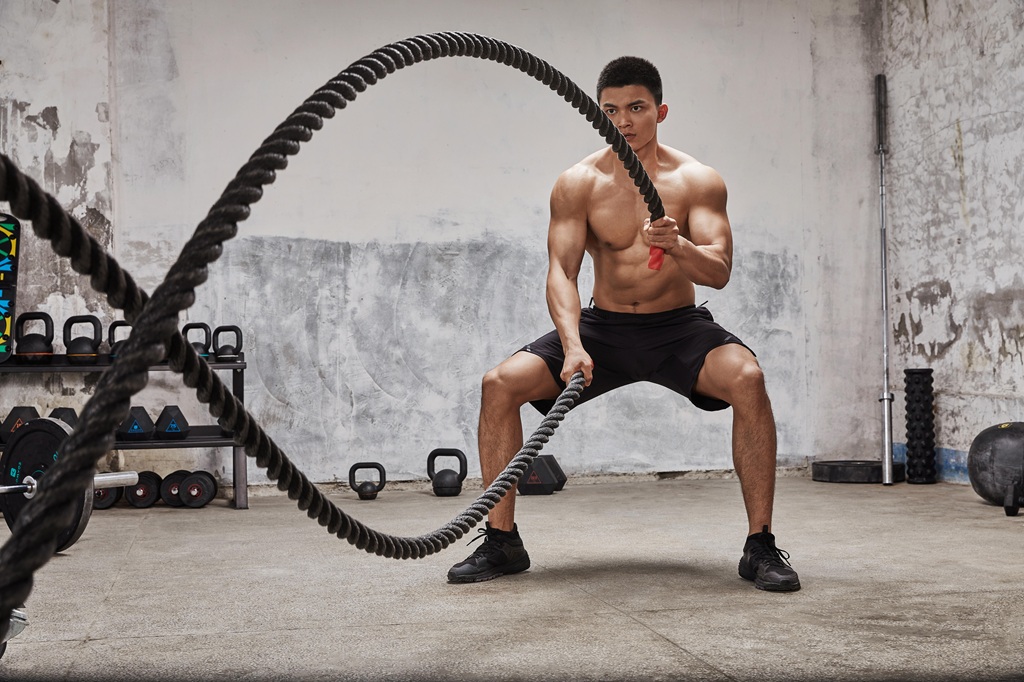The Impact of Exercise Rope Training on Cardiovascular Health

Cardiovascular health is the cornerstone of a long and fulfilling life. Among the countless exercise options available today, exercise rope training has risen as a dynamic and engaging way to improve heart health. Whether you’re an elite athlete or a fitness newbie, this full-body workout can help you build stamina, burn calories, and elevate your overall health. Excited to dive in? Let’s explore how exercise rope training can be your secret weapon to unlocking a healthier heart. (By the way, if you’re searching for high-quality exercise ropes, don’t forget to explore Yifarope for durable and versatile options.)
What Is Exercise Rope Training and Why Is It So Effective?
Exercise rope training, often referred to as battle rope training, involves using thick, heavy ropes anchored to a fixed point. The idea is simple: by moving the ropes in various patterns (such as waves, slams, or spirals), you engage multiple muscle groups while simultaneously elevating your heart rate.
Unlike traditional cardio workouts such as jogging or cycling, exercise rope training incorporates both strength and endurance, giving you a two-in-one fitness experience. What makes it so unique is its high-intensity, low-impact nature, which works wonders for your cardiovascular system without putting excessive strain on your joints.
Research supports its benefits. A study published in the Journal of Strength and Conditioning Research found that a 10-minute battle rope workout can burn up to 112 calories while significantly elevating heart rate and oxygen consumption. Imagine burning calories, building muscle, and boosting heart health—all in one session!
How Exercise Rope Training Benefits Your Cardiovascular Health
When it comes to your heart, exercise rope training delivers a wealth of benefits:
- Boosts Cardiovascular Endurance
The repetitive, high-intensity movements of rope training challenge your heart and lungs, forcing them to work harder. Over time, this strengthens the heart muscle, improves blood circulation, and increases the efficiency of oxygen delivery to your body.
For example, incorporating 15-20 minutes of alternating rope waves into your routine three times a week can lead to noticeable improvements in stamina and endurance within just a few months.
- Enhances Heart Rate Variability (HRV)
Heart rate variability, or HRV, is an indicator of your heart’s ability to adapt to stress. Studies show that regular high-intensity interval training (HIIT), such as rope training, can improve HRV, making your heart more resilient to both physical and emotional stressors.
- Reduces Risk of Cardiovascular Diseases
Exercise rope training promotes lower blood pressure, reduced cholesterol levels, and improved blood sugar control. A consistent rope training routine can help mitigate risk factors for conditions like hypertension, atherosclerosis, and type 2 diabetes—major contributors to heart disease.
Incorporating Rope Training in Small Spaces
Not everyone has access to sprawling gyms or wide-open spaces. But the beauty of exercise rope training lies in its adaptability. You can set up your training in compact environments, like a small home gym or even outdoors.
If you’re looking to enhance your workout space, consider partnering with small building contractors in Peterborough UK to construct a yoga ropes wall. Adding a versatile yoga rope wall not only amplifies your fitness potential but also optimizes your space for rope training and other exercises.
Rope Training vs. Traditional Cardio Workouts
How does exercise rope training compare to your traditional cardio go-tos like running, cycling, or swimming?
Let’s break it down:
| Factor | Rope Training | Traditional Cardio |
| Calorie Burn | High (10-12 calories/min) | Moderate (8-10 calories/min) |
| Muscle Engagement | Full-body | Lower body focused |
| Impact on Joints | Low | Moderate to high |
| Variety of Movements | Diverse (waves, slams) | Limited |
While traditional cardio still holds its place in a well-rounded fitness routine, rope training’s efficiency and adaptability make it a strong contender for those looking to maximize their time and effort.
Top Exercise Rope Training Techniques for Cardiovascular Health

Want to spice up your routine? These beginner-friendly and advanced techniques will keep your heart pumping and your muscles burning.
Alternating Waves
This is the classic move you’ve likely seen in action. Hold one rope in each hand, plant your feet firmly, and alternate creating waves. This movement works your shoulders, arms, and core while skyrocketing your heart rate.
Double Rope Slams
Raise both ropes overhead and slam them down forcefully. This explosive movement is excellent for building power and endurance.
Lateral Waves
Move the ropes side to side in a snake-like motion. This engages your obliques and stabilizer muscles.
Circles
Create circular motions with the ropes, either inward or outward. It’s a great way to challenge your arms and improve coordination.
Related: How Much Does Insanity Workout Cost?
Common Mistakes to Avoid During Rope Training
Like any workout, proper form is crucial to avoid injuries and maximize benefits.
Keep these tips in mind:
- Avoid over-gripping the ropes, as it can strain your wrists and forearms.
- Maintain a slight bend in your knees and engage your core to protect your lower back.
- Keep your movements controlled and rhythmic; don’t rely solely on momentum.
FAQs
How long should I do exercise rope training for cardiovascular benefits?
For beginners, aim for 10-15 minutes per session, three times a week. As your stamina improves, you can extend your sessions to 20-30 minutes.
Is exercise rope training suitable for all fitness levels?
Yes! Rope training can be easily modified to match your fitness level by adjusting the duration, intensity, or type of movement.
Can rope training replace traditional cardio exercises?
While rope training is a fantastic cardiovascular workout, it’s ideal to combine it with other forms of cardio, such as jogging or cycling, for a balanced routine.
What type of rope should I use for training?
Opt for durable, high-quality ropes made of poly dacron or nylon. For beginners, start with a 1.5-inch diameter rope that’s 30-40 feet long.
Related: How to Work Out Your Neck: Strengthening Exercises
Does exercise rope training help with weight loss?
Absolutely! Rope training burns a high number of calories while building muscle, making it an effective tool for weight loss.
Can rope training be done outdoors?
Yes! As long as you have a sturdy anchor point, you can enjoy rope training in your backyard, park, or any outdoor space.
Conclusion
Exercise rope training is more than just a trendy fitness routine—it’s a powerhouse workout that strengthens your heart, boosts endurance, and supports overall health. With its dynamic movements and adaptability, it offers something for everyone, from beginners to seasoned athletes. Whether you’re looking to improve your cardiovascular health or add variety to your fitness routine, exercise rope training is worth a try.







